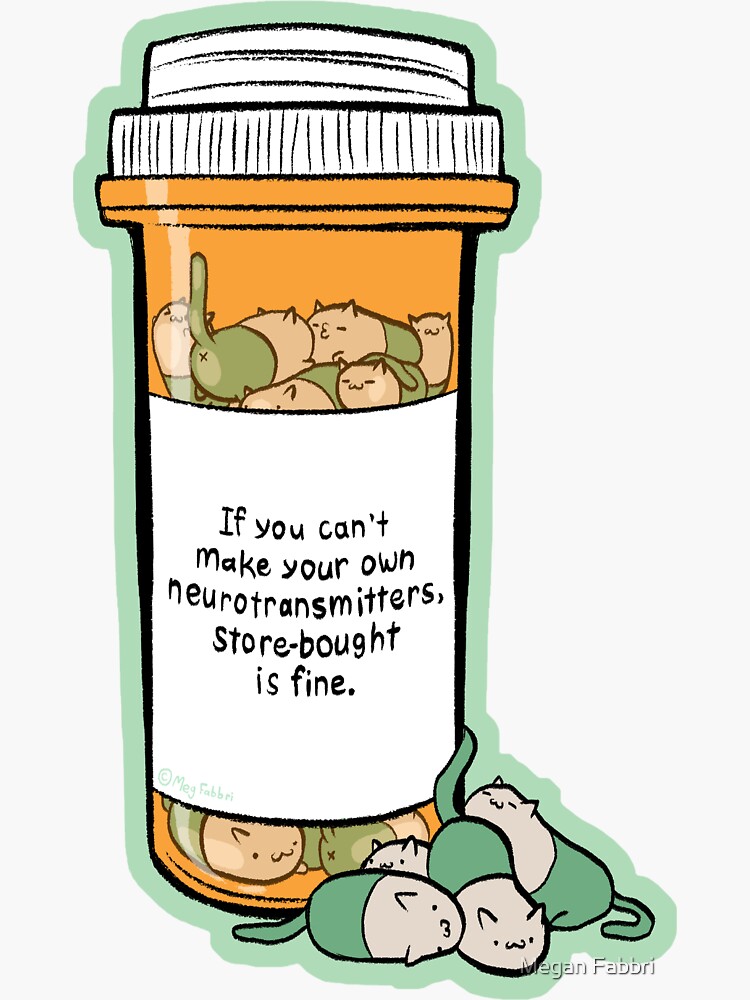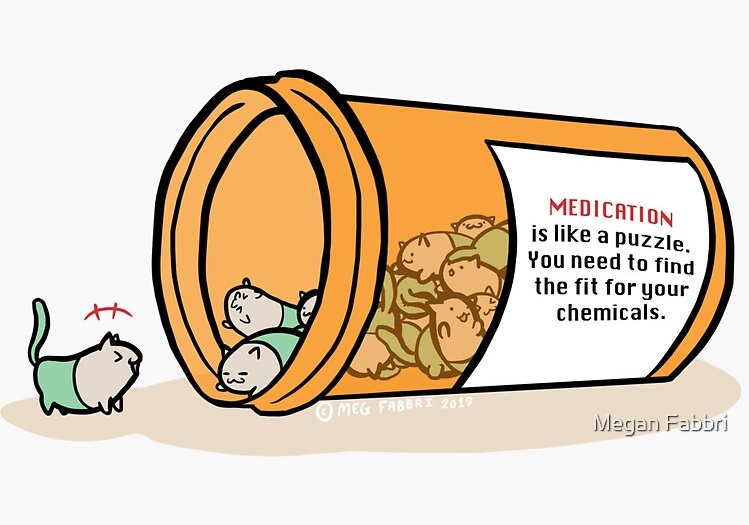A Tyger’s Guide to Overcoming Triggers
Our world has changed so much in 2020, and everyone around us is feeling the effects of those rapid changes. For many, those changes have brought to the forefront mental health challenges they have never faced. Many of us are no strangers to those challenges and have battled them throughout our lives. I have been working on my healing for many years by seeking professional help, learning from mentors, research, and a lot of internal reflection. My path has allowed me to gather many tools, and I hope sharing them may help others may help them on their journey. I am not a mental health professional, I offer these ideas because they’ve worked for me. Apply them (or don’t) as you see fit.
My mental health struggles consist largely of complex PTSD from long term trauma and emotional neglect from my childhood, further compounded with PTSD from various trauma as an adult and teenager. I have depression and an anxiety disorder, which may have been things I would’ve had without the trauma, but this trauma definitely compounded my struggles, at the very least. Regardless of the cause or origin, the result is that I struggle with depression and severe anxiety on a very regular basis. I have spent the last six years intensely working on my mental health and crawling out of the hole I was stuck in. Looking back, the progress I have made fills me with more pride than anything else in my life. I could write for pages about my journey, but in this short piece, I would like to dive directly into some specific tools I want to share with you all.
Tyger’s Tools for Managing Triggers
The term “trigger” in the context of mental health refers to a stimulus that elicits a severe emotional response in the mind, often one of panic. One of the hardest parts of dealing with trauma is trying to recover from something that triggers you. Depending on the trauma and the trigger, recovery can be arduous and time-consuming. I use several techniques to help manage the triggers of my anxiety.
One method I use is to break down what’s happening scientifically. This helps put a little bit of an emotional buffer between myself and the pain, as well as helping me identify ways to address the situation at hand. Anxiety has a purpose, and that purpose is to protect us. Sometimes this instinct is on overdrive to the point where it is hurting instead of helping. This is especially true when a trigger is formed. In the case of a traumatic experience, the brain may create a neural pathway that will lead a reaction to stimuli that feels or looks like that trauma to that panicked or triggered response. It is possible to remake a new path, but it takes work and is unfortunately nowhere as easy or instantaneous as the one made by the trauma.

The first step is figuring out how to head off the panic, and then redirecting the brain in a healthier direction. If you can catch the panic before it fully blooms, it’s remarkably helpful to tell yourself that you are safe. Remind yourself that the scary thing is not happening, and you don’t need to enter fight-or-flight mode. This may seem simplistic, but seriously… try it! This technique has been amazingly effective for me. Specific examples of cases where I have used this method to great success include the following:
- I recently moved back to my home state after traveling for 5.5 years. Driving through areas I had lived and worked before had previously been triggering for me. When I felt my anxiety start to spike, I took a deep breath and thought powerfully to myself “I am safe.” I immediately noticed my anxiety paused and stopped rising, almost like it was listening. I continued to think thoughts like “the people who hurt me aren’t here anymore” and “the things that hurt me aren’t happening now” as well as “this is just a place”. A place that holds traumatizing memories can almost feel like it’s haunted, but in reality, it’s just a place that exists. Using this technique I was able to mentally zoom out and see the bigger picture
- I was in a car accident where I flipped my car. This caused me to be so scared of driving that I refused to drive for about two years, and still causes surges of panic when I am a passenger in a car. I have found this technique to be effective in trying to both minimize the level of panic I reach, the amount of time I spend in panic mode, and my outward reaction.
At the beginning of dealing with my car-related PTSD, I would scream when I was scared in the car. This is unsafe and unpleasant for everyone present, and increased my panic. I needed to redirect, and figure out a different way to react, for the safety and comfort of myself and those around me. I gradually built the habit of snapping my fingers when I was triggered in the car instead of screaming. I noticed once I had fully switched over that it wasn’t just a more sustainable way to physically react to my fear, it was also interrupting the images of the things I was afraid of from flashing through my mind. When I noticed that, I doubled down on training my brain to jump away from those scary thoughts in that split second when they were interrupted. Through this process, I’ve gone from panicking in the car to occasionally snapping my fingers a couple of times and quickly returning to a state of calm. Finding something quick, small, and concussive, like snapping your fingers, snapping a hair tie, etc., can be a very helpful bridge in the process of reforming healthy pathways in your brain by stopping the trigger in its tracks and allowing you to train your brain to go somewhere else.
The next trigger management technique is also one I’ve utilized in my recovery from my car accident. This method is a mixture of facing fears and recentering in the moment. The cause of my accident was catching a soft shoulder on the side of a narrow road. As a result, I was terrified every time I was in a car that neared the right side of the road. I tried keeping my eyes closed but this made things even worse. I decided to force myself to look in the rearview mirror at the edge of the road in relation to the location of the tires. At first, trying to make myself look was terrifying, but soon, I would regularly use this tool to calm myself if that anxiety struck.
Tyger’s Tips for Identifying Contributing Factors
One of the many things I learned through therapy was that being very aware of my body, and what it had to tell me, was a valuable tool in managing depression and anxiety. I have realized a lot of things affect mental health. Some of these factors and their effects include the following:
- Diet-I have noticed that if my diet is too high in processed sugar or estrogen rich content, I have a harder time managing my emotions. Making sure I am eating enough and in a healthy way is giving me my best chance to manage both my mental and physical health. Remember to drink water!
- Hormonal cycles-I have been closely tracking my cycle for years now, and as a result, know when to expect hormone-related emotional and physical symptoms. I often know when I will need space to be alone, or give myself patience, making sure I take a step back before I react to a situation.
- Supplements-certain vitamins can help depression and anxiety in a big way. The supplements I take for this purpose include magnesium methyl B12 and Saint John’s Wort*, among others. If I’m not getting the nutrients I need, it has a huge effect on my body and mind. I carefully tailor a personal vitamin regimen to optimize my health. I am also careful not to take too much of any of my supplements as that can cause health problems. (*Saint John’s Wort interacts with many medications and should always be discussed with a doctor before adding to your regimen)
- People I spend time with-I pay very close attention to how I feel when I spend time with someone and how I feel before and afterward. Do I feel safe? Do I feel like I can be myself? Do I feel especially drained? Do I feel like I can trust them, or do I feel like I have to guard myself? This can be complicated because I have social anxiety symptoms as well, so I may feel anxious or drained after being with a person who is good for me, but there is a discernible difference between the anxiety I feel before or after hanging out with a good friend and the way I feel after interacting with someone who is draining or triggering.
- Astrological events-this factor taps into my spirituality, and definitely may not resonate with everyone. I pay close attention to moon cycles and astrological events and how they affect me because I have found comfort and explanation in doing so. My studies in this area have also aided me in communicating with and understanding other people as well.
Tyger’s Reminder to Open Up
I would be remiss if I did not address how important and valuable seeking professional help with mental health has been in my journey. I have utilized the expertise of psychiatrists, therapists, and counselors, as well as having benefited from taking psychiatric medications. In my case, I took psychiatric medication for a year and a half to help stabilize my mental health and make it much easier to implement the tools I was learning in counseling. I was then taken completely off the psychiatric medication under doctor supervision. I know it may seem very scary to try and start getting professional help with your mental health, especially when considering using psychiatric medication. In my experience, I would definitely say it is worth taking the chance. There are many medications available, so if one does not work for you, you can try something different. They are also commonly not something you will be taking for the rest of your life. If you do continue to take them, there is absolutely nothing wrong with being on medication for a health problem. Mental illness is just as real and life-affecting as other illnesses, and taking medication for it has the potential to greatly improve your quality of life. That said, I would still say that the most valuable professional help I received was definitely that of my trauma counselor. Whether you choose to take medication or not, the most important action to improve your mental health is to do the hard mental and emotional work to get there and strive to find the healthiest ways you can manage and treat your mental health. Sadly, there is no magical answer, even with the help of medication, but looking back on all the work I have done, I can tell you that as daunting as the task may seem, it is going to be so worth it. I hope you too will look back on your progress and feel proud and hopeful for the future ahead of you.


Art Credit: Megan Fabbri
The last thing I want to talk about is how important it is to let the people around you in on your journey. When the people around you know what hurts you, they can handle those elements with care. They may even be able to help you on your journey (if they feel like they are willing and able to). Keep in mind that other people are in no way responsible or even capable of doing the emotional labor of working through your mental health journey and expecting them to is codependent and unfair. Others can still be supportive of you on your journey, and at the very least can avoid making your work harder. It’s much better to talk to people about how you react in certain situations before they happen instead of mid panic. For example, I explain that I snap my fingers when I get scared riding in the car. It’s important that the people I ride in the car with understand so they aren’t confused when it happens. They also generally drive more carefully to keep me from getting scared, which is an example of support.
After you talk to the people around you about your journey, your triggers, and your coping mechanisms, and how they can be supportive and not detrimental on your journey, their responses will tell you whether the person is safe to be around. If someone responds to you by belittling or minimizing your feelings and experience… Or worse, if they use this information to hurt or control you, that person is not safe. There is a level of nuance to this. If you are asking too much of someone or having unreasonable expectations, it doesn’t make them a toxic presence in your life to enforce their own boundaries. Additionally, it is not toxic for someone to express concern that your coping mechanism is unhealthy or harms you or others. Every situation is going to be unique, so be conscious and listen to both your heart and your head in these sensitive moments.
I hope these snippets of my continuing journey through mental health can be helpful to you! Even if these tactics don’t resonate with everyone, I hope sharing these things will at least help someone out there feel a little bit less alone. Hang in there everyone! Thank you for reading!




Very good read thank you <3
Report commentRereading. You’re amazing kitten! Thank you for sharing this
Report comment